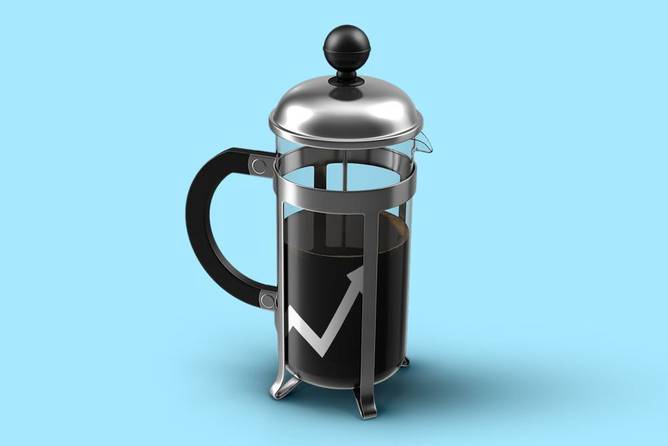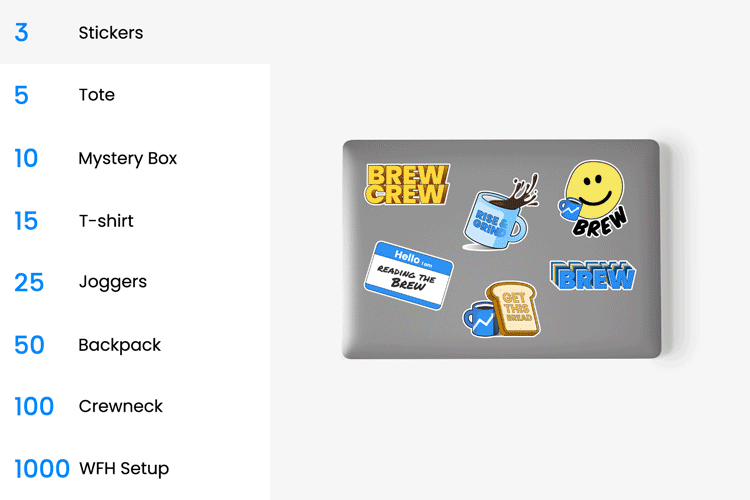It’s Monday. Hope there are no new brand campaigns out today—they’ll probably be overshadowed by the release of an interview between comedian Ziwe and disgraced ex-congressman George Santos.
In today’s edition:
—Katie Hicks, Jasmine Sheena, Kristen Parisi
|
|
Francis Scialabba
Pitching: Can’t live with it, can’t make money without it. Or can you?
In recent years, more agency workers—particularly young ones—have called attention to the impact of pitching on work-life balance, given that it’s often non-billable and can require long hours. More conversations are also being had around the financial costs. This summer, the 4A’s and the ANA released a study that found that the total average cost of some new account pitches can exceed $200,000 for an agency and $400,000 for a brand.
To address some of these concerns, agencies like Mother have created alternatives to pitching, encouraging clients to meet instead for a date-like “chemistry meeting,” with the agency donating first-year profits from new clients to a not-for-profit org. In the UK, the ISBA and the IPA created the Pitch Positive Pledge, encouraging brands and agencies to pledge to do things like evaluate whether a project’s budget justifies a pitch at all.
But given how entrenched the pitching process is in marketing, can it ever be replaced? While sources told us it’s doubtful, there are signs of—and ongoing calls for—improvement heading into 2024.
Skip the pitch: More than a year in, Mother’s “Pitch It Forward” initiative is going strong, Chris Gallery, strategist at Mother London, told us. He said the agency has seen more interest from clients over time, and cited two major success stories in the last year: retailer Marks & Spencer’s clothing business and liquor brand Jägermeister.
“They were both clients that were predisposed to not necessarily [think] a drawn-out pitch process was going to be a useful use of their time, but equally, they needed some kind of reassurance that they were going to find a partner that would be the right fit for them,” he said.
In the case of Marks & Spencer, all it took was a meeting with the agency to discuss the brand’s needs, which Gallery said created an environment where everyone felt confident to move forward.
Continue reading here.—KH
|
|
PRESENTED BY RAY-BAN META
|
Ready to level up your shades game? What if we told you there’s a pair of stunners out there that not only look iconic but also let you livestream any moment hands-free, all without leaving the moment? Interested? Thought so.
We’re talkin’ about the Ray-Ban Meta smart glasses. Available in tons of styles, colors, and shaded and optical lenses, these specs come with a built-in 12 MP camera and five-microphone system so you can capture everything life has to offer, make calls, listen to music—you name it.
From preserving precious moments with family to increasing daily efficiency to capturing your next adventure, the Ray-Ban Meta smart glasses can transform your everyday life into something totally extraordinary.
Upgrade your shades.
|
|
Constantine Johnny/Getty Images
Ad spend on streaming TV is expected to keep climbing in the coming years, but there’s some not-so-good news for the David Zaslavs and Bob Igers of the world. Ad spend on the top six streaming platforms, which include Max, Discovery+, and Hulu, totaled $1.07 billion this year, which is down 8% year over year, according to data from advertising intelligence platform MediaRadar.
- The report, which evaluated data from January 1, 2022, through October 31, 2023, found that ad spend on the six biggest OTT platforms, which also included Paramount+, Peacock, and Pluto TV, fell from $1.2 billion in 2022.
Why the reason for the decline? Major financial advertisers, including insurance giants like Geico, State Farm, and Progressive, cut their ad spend from $123 million to $32.5 million, MediaRadar found.
Crunch the numbers: About $503 million, or 47%, of ad spend in the period came from the restaurant, medical and pharmaceutical, finance, retail, and technology verticals. Pharma companies like AbbVie and GlaxoSmithKline and quick-service restaurants like McDonald’s, Taco Bell, and Subway increased their ad spend the most.
Max saw 19% of its ad dollars come from tech advertisers, including telecom giants like T-Mobile and HBO’s former owner, AT&T. Tech advertisers made up almost 10% of ad spend on Paramount+. Restaurants made up a major contingent of advertisers on Paramount+, as well as on Peacock and Hulu.
Hulu also saw strong ad investment from retail advertisers like Target and Walmart, which accounted for 28% of its ad dollars. Retail advertisers made up 14% of ad spend on Discovery+ and 12% on Pluto TV.
Read more here.—JS
|
|
Francis Scialabba
As we approach the end of the year, it appears the only topic more divisive than real versus faux Christmas trees is whether remote or in-person work is better.
Amid the discourse, 90% of employers have said they will return to the office by the end of next year, a ResumeBuilder survey found. Companies including Amazon, Meta, JPMorgan Chase, and Disney have implemented strict in-office attendance policies in recent months, with some even warning workers not in compliance that they may be fired. Neiman Marcus Group, meanwhile, is embracing remote work for the majority of its roughly 2,000 corporate employees. The retailer believes this strategy will be key to its long-term equity, recruitment, and retention success.
Not going out of style: After an engagement survey revealed employees wanted more flexibility, Eric Severson, Neiman Marcus Group’s chief people and belonging officer, told HR Brew that the company decided to move to a remote model. It was 2019, before Covid-19 hit, and while Severson had only recently joined the company, he had experience implementing remote-work arrangements.
“One of the reasons we had confidence to do this at that time was that I had done something similar at Gap Incorporated back in 2009,” Severson said. “We had something we adopted there called the ‘results-only work environment,’ that had first been tested at Best Buy. We saw dramatic results within six months, [a] 50% reduction in attrition.”
Severson believes the argument adopted by some leaders that in-person work is better for productivity and collaboration is misguided. The benefits, he said, outweigh the potential risks.
Read more on HR Brew.—KP
|
|
TOGETHER WITH RAY-BAN META
|
|
Shades for the next gen. Smart sunglasses may be fresh on the scene, but the Ray-Ban Meta smart glasses combine iconic design with cutting-edge technology—and that’s why they’re here to stay. A built-in 12 MP camera, a five-microphone system, and tons of iconic styles…what more could you ask for? Get your pair.
|
|
Level up your career with these resources from our sponsors!
- Connected TV is poised for advertising greatness—here’s how to unlock its possibilities
|
|
Morning Brew
There are a lot of bad marketing tips out there. These aren’t those.
Eyes on the prize: Gen Z shopping trends for marketers to know.
Pretty in pink: Mattel’s brand chief talks marketing tips she learned from Barbie.
Play ball: Keep track of every Super Bowl ad that’s been announced so far.
Live in the moment: And share it with your world with Ray-Ban Meta smart glasses. Stay connected and capture the world with this perfect blend of iconic style and cutting-edge tech. Shop styles here.* *A message from our sponsor.
|
|
Francis Scialabba
Executive moves across the industry.
-
Apoorv Sharma, formerly a senior marketing and comms manager at Apple, will become CMO at test prep company Allen Career Institute.
-
Adam Petrick, Puma’s global chief brand officer, is joining SharkNinja as CMO.
-
Lauren Weinberg is Peloton’s new CMO. She previously led marketing at payments platform Square.
|
|
ADVERTISE
//
CAREERS
//
SHOP
//
FAQ
Update your email preferences or unsubscribe
here.
View our privacy policy
here.
Copyright ©
2023
Morning Brew. All rights reserved.
22 W 19th St, 4th Floor, New York, NY 10011
|
|











